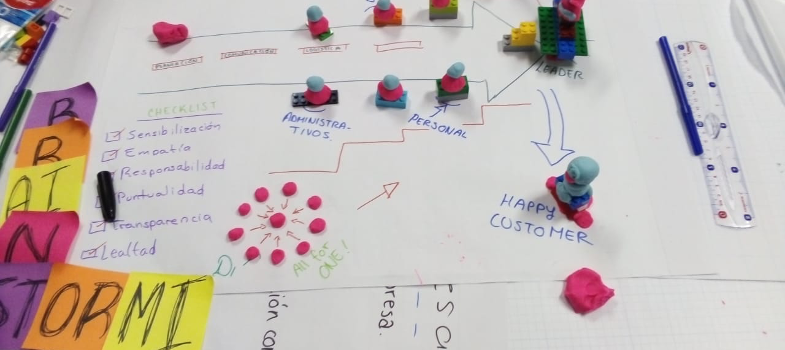2. How to use this material
The material for the Employability by Design course is presented entirely online. All the content, activities and supporting material can be found on this website.
The material is presented as a series of recipes and the recipes are grouped together based on the three main phases of preparing the workshop:
- Preparation (Recipes Preparation 1, 2, and 3)
- On the day (recipes Workshop activities 1 to 9)
- Feedback, reflection and Iteration (recipes Follow up 1 and 2)
You should work through each recipe in the order it is presented and then return to complete the activity in recipes Preparation 1, 2, and 3 to begin planning your workshop in detail.
Recipes
Think of a recipe as a practical method you can use to make things happen: to create learning material, to run an activity, or to structure assessment or feedback.
Each recipe follows the same structure. It introduces the background to the learning method, it tells you what resources you need and takes you through the steps of how you facilitate the learning. It tells you about limitations or problems you might encounter and how to counteract them.
Each recipe also has a training activity to help you learn about the method presented as well as preparation in using it.
For each recipe:
- Read it through carefully to understand the method
- Try to imagine using the recipe with students
- Note down in your teaching diary any questions or thoughts you have
- Complete the training activity
Some of the recipe activities require you to work with other teachers in your teaching team.
Team teaching
One of the most effective ways of teaching is team teaching with peers. This can help share the workload and generate more ideas.
Working with others can be challenging and it is always best done with people you trust and have developed working relationships with. A top tip here is to adopt the attitude of the Employability by Design method in your teaching team – no one knows everything; no one knows what the answer to perfect teaching is; you are finding out what works and what doesn’t, just like your students!
For Employability by Design workshops, we recommend a teaching team of three teachers. This size of team could manage a group of around 40 students, possibly more once the team has experience of the method and of working with one another.
Having three members can help make decisions and is can be critical in maintaining the energy required to keep a workshop running – a 4 hour workshop takes a lot of effort!
We recommend you study this material the first time with at least one other teacher to complete the activities and discuss the themes and issues raised.
We recommend that you organise the teaching team in some way: one teacher could take the lead for each part of the process or for each stage of the workshop. Similarly, organise yourselves by roles and preferences – some people are better at (or prefer) some things compared to others (e.g. presenting, observing, organising, etc.)
Once you have worked in your team a few times you will quickly find out how well you can work together. Feel free to incorporate reflecting on the team into the reflection phase too!
Diary and reflective practice
As you work through the activities and run the workshop you should keep a teaching diary to record your activity, analysis and thoughts. Even if you only keep very short or outline notes it can still be useful as a way of looking back at what you did and how successful it was.
What you keep in your diary is entirely up to you
- Simple notes of activity (e.g. date, event, symbols for whether it was good or bad);
- Detailed reflective diary as part of professional development or other activity
- Personal review of specific activities
Start your teaching diary now - even better, start a teaching sketchbook diary with blank paper and a good quality pen. Draw your ideas and thoughts as well as write them!
Second time around
As you become more experienced in using the recipes you will begin to learn for yourself a number of small, but very important, things about teaching in this way. Recognising these is important to help consolidate what you have learned (as well as to share your knowledge with others).
When you go through the process a second time use the recipes as you did before but this time try the Advanced training activities. These are designed to help you recognise what you have learned as well as begin to formalise this in a way that can support your professional development.
You should also feel free to change the recipes to suit your own ways of working. That’s how recipes work - each time you use them they are slightly different.
